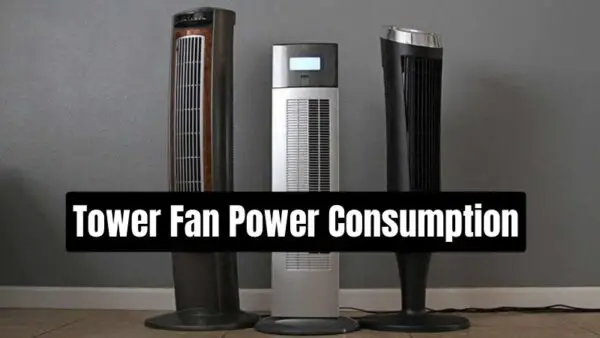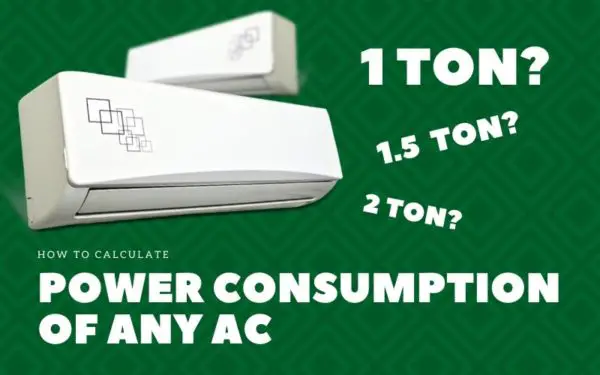If you are planning to buy a washing machine and wondering whether top load washing machine consumes less electricity or front load then this article is for you.
A top-load washing machine consumes less electricity than a front-load washing machine.
In case you use the inbuilt water heater in a front-load washing machine, a front-load washing machine consumes 2 to 3 times more electricity than a top-load washing machine.
And if you don’t use the heater then, a front-load washing machine, a front-load washing machine consumes 1.5 times more electricity than a top-load washing machine.
Read the article to know in detail the daily, monthly, and annual power consumption of front-load and top-load washing machines.
Electricity Consumption Top load Vs Front Load Washing Machine Per wash:
A top-load washing machine consumes less electricity than a front-load washing machine.
The reason is,
- Unlike front-load washing machines, most top-load washing machines don’t have a built-in water heater. Generally, it takes a lot of electricity to heat water using electricity, hence, front-loaders have high power consumption.
- Even if you don’t use the inbuilt water heater in the front-load washing machine, the power consumption is still high, as most front-load washing machines have a longer washing cycle and the electric motor size is also big.
Okay, now that we know that top-load washing machine consumes less electricity, how much is the difference? let’s find out.
Here, I have made a table that compares the power comparison of the front load and top load washing machine for one single wash.
I have got the power consumption figures from the energy savings label and both the washing machines are operating without using heaters.
| Washing Machine Size | Front-load power consumption per wash | Top-load power consumption per wash |
|---|---|---|
| 6 kg washing machine | 0.49 kWh | 0.30 kWh |
| 7 kg washing machine | 0.50 kWh | 0.33 kWh |
| 8 kg washing machine | 0.49 kWh | 0.34 kWh |
| 9 kg washing machine | 0.64 kWh | 0.36 kWh |
| 10 kg washing machine | 0.70 kWh | 0.38 kWh |
It’s evident from the table, that a similar size front-load washing machine when operated in similar conditions, will consume around 50% more electricity per washing cycle.
Mind you, if you start using the inbuilt water heater in a front-load washing machine then the power consumption can easily be 2 to 3 times of top-load washing machines.
Even though we see the difference in power consumption from the above table, it looks small. let me show you the power consumption difference in a month.
Monthly Power Consumption Top load Vs Front Load Washing Machine:
The table below shows the monthly power consumption of the front-load washing machines vs the top-load washing machines for 15 washing cycles in a month.
Note: Heater not used in either washing machine.
| Washing Machine Size | Monthly power consumption, front load (15 wash cycles/month) | Monthly power consumption, top load (15 wash cycles/month) |
|---|---|---|
| 6 kg washing machine | 7.35 kWh | 4.50 kWh |
| 7 kg washing machine | 7.50 kWh | 4.95 kWh |
| 8 kg washing machine | 7.35 kWh | 5.10 kWh |
| 9 kg washing machine | 9.60 kWh | 5.40 kWh |
| 10 kg washing machine | 10.50 kWh | 5.70 kWh |
As you can see from the above table, the difference in power consumption becomes bigger in a month.
Mind you I have assumed 15 washing cycles a month, if you use your washing machine every day then just double the values.
Let’s see how big the difference becomes over a year.
Annual Power Consumption Top load Vs Front Load Washing Machine:
The table below shows the annual power consumption of the front-load washing machines vs the top-load washing machines for 15 washing cycles in a month.
Note: Heater not used in either washing machine.
| Washing Machine Size | Annual power consumption, front load (15 wash cycles/month) | Annual power consumption, top load (15 wash cycles/month) |
|---|---|---|
| 6 kg washing machine | 88.20 kWh | 54 kWh |
| 7 kg washing machine | 90 kWh | 59.40 kWh |
| 8 kg washing machine | 88.20 kWh | 61.20 kWh |
| 9 kg washing machine | 115 kWh | 64.80 kWh |
| 10 kg washing machine | 126 kWh | 68.40 kWh |
Okay, enough with the power consumption numbers, let’s see the important part, how much electricity bill one can save by using a top-load vs front-load washing machine.
Monthly Electricity cost of Top-Load Vs Front-load washing machines:
The table below shows the monthly electricity cost of the front-load washing machines vs the top-load washing machines for 15 washing cycles in a month.
| Countries (Tariff) | 6 kg front load washing machine monthly running cost (15 wash/month) | 6 kg top load washing machine monthly running cost (15 wash/month) |
|---|---|---|
| Mumbai (Rs 10/kWh) | 7.35 kWh, Rs 73.50 | 4.50 kWh, Rs 45 |
| USA (16.20 c/kWh) | 7.35 kWh, $ 1.19 | 4.50 kWh, $ 0.72 |
| UK (36p/kWh) | 7.35 kWh, € 2.64 | 4.50 kWh, € 1.62 |
| Canada (C$ 0.156/kWh) | 7.35 kWh, C$ 1.14 | 4.50 kWh, C$ 0.70 |
| Australia (A$ 0.32/kW) | 7.35 kWh, A$ 2.35 | 4.50 kWh, A$ 1.44 |
Mind you, I have assumed you are not using the inbuilt water heater in the front-load washing machine. However, if you do it then the electricity cost of a front-load washing machine would be 2 to 3 times of a top-load washing machine of the same size.
You can check out these articles to know in more detail about the power consumption of top-load and front-load washing machine.
From the above tables, I think it’s settled that top-load washing machines consume less electricity than front-load washing machines. But, front-load washing machines use less water than top-load.
How much exactly? let’s see.
Water Consumption Comparison Front-Load Vs Top-Load Washing Machine:
Top load washing machine consumes 2 times more water than a front-load washing machine. Here are some approximate figures.
| Washing machine type | Average water consumption per wash cycle |
|---|---|
| High-efficiency top-load washing machine | 15 to 30 gallons (50 to 120 liters) |
| High-efficiency front-load washing machine | 5 to 10 gallons (20 to 40 liters) |
To conclude this article, a front-load washing machine consumes 1.5 times more electricity than a top-load washing machine in case the water heater is not used.
However, if the water heater is used then, a front-load washing machine consumes 2 to 3 times more electricity than a top-load washing machine.
In either case, you can always save electricity, check out this article to know how you can reduce your washing machine power consumption and save electricity.
Thank you for reading.
Aavjo ! (Goodbye and visit again in Gujarati)





